These pictures show the Sun's atmosphere (corona). The pictures were taken during two different solar eclipses. The picture at the top was taken in 1994 when there weren't many sunspots. The bottom picture was taken in 1980 when there were lots of sunspots. Can you see which picture has streamers near the Sun's poles?
Click on image for full size
Images courtesy of UCAR's High Altitude Observatory and Rhodes College.
The Solar Polar Atmosphere
Some of the time the Sun's atmosphere is very different over the Sun's poles from its atmosphere over its equator. Sometimes the solar wind that "blows" outward from the Sun is different at the poles, too.
About every 11 years the Sun has very few sunspots for a while. Scientists call these times "solar min". During solar min, the Sun's atmosphere looks different from other times. The corona is the Sun's upper atmosphere. We can see the corona during a solar eclipse or by using a special instrument called a coronagraph. Pictures of the corona at solar min have streamers flowing away from the Sun's equator. But usually there aren't any streamers coming from the poles!
The solar wind is a flow of particles outward from the Sun. At solar min, the solar wind coming from the Sun's poles flows very fast. It zooms away from the Sun at speeds of 700 km/sec (435 miles/second) or faster. The solar wind coming from the Sun's equator is slower. It only goes about half as fast as the solar wind from the poles.
Sometimes there are lots of sunspots. Those times are called "solar max". Sunspots have very strong magnetic fields. When there are lots of sunspots, the Sun's magnetic field becomes a tangled mess. Eclipse photos and coronagraphs show streamers shooting out from all parts of the Sun at solar max. They don't just come from the equator the way it is at solar min. Also, the solar wind is different at solar max. Both fast and slow solar winds can "blow" outward from all parts of the Sun.
You might also be interested in:
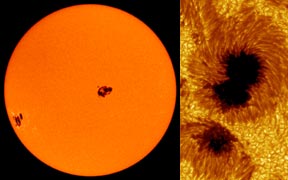
Sunspots are dark spots on the Sun. They may look small, but they are actually as bigas a planet like Earth or Mars! Sunspots are "dark" because they are colder than the areas around them. Of course, they
...more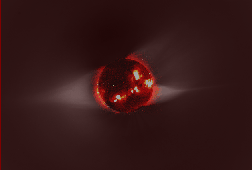
Rising above the Sun's chromosphere , the temperature jumps sharply from a few tens of thousands of kelvins to as much as a few million kelvins in the Sun's outer atmosphere, the solar corona. Understanding
...more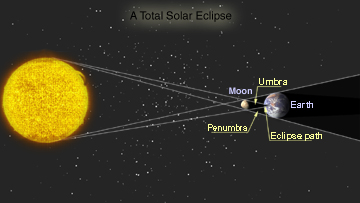
An eclipse of the Sun occurs when the Earth passes through the moon's shadow. A total eclipse of the Sun takes place when the Moon is directly between the Sun and the Earth. When a total eclipse does
...more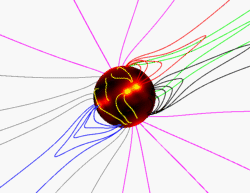
The gas in the solar corona is at very high temperatures (typically 1-2 million kelvins in most regions) so it is almost completely in a plasma state (made up of charged particles, mostly protons and electrons).
...more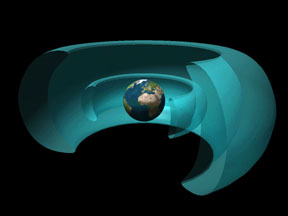
Text for this level has not been written yet. Please see the "Intermediate" text for this page if you want to learn about this topic. To get to the "Intermediate" text, click on the blue "Intermediate"
...more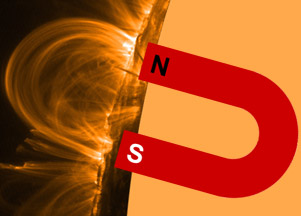
You probably have magnets on your refrigerator holding up some of your artwork or a photograph of a friend or family. Did you know that it is magnetic fields (which all magnets have) that make sunspots
...more
Text for this level has not been written yet. Please see the "Intermediate" text for this page if you want to learn about this topic. To get to the "Intermediate" text, click on the blue "Intermediate"
...more














